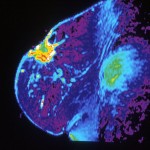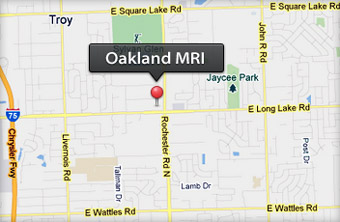 Magnetic resonance imaging (MRI) scans may predict a woman’s future risk of developing breast cancer, found a new study published Tuesday in Radiology.
Magnetic resonance imaging (MRI) scans may predict a woman’s future risk of developing breast cancer, found a new study published Tuesday in Radiology.
Researchers reviewed screening breast MR images from high-risk women 18 years or older with no history of breast cancer and specifically looked for associations between cancer risk and imaging features, including breast density and background parenchymal enhancement (BPE). In MR images, BPE occurs when areas of normal background breast tissue appear white or enhanced. Previous research has suggested a possible link between BPE and cancer risk.
In the study, women who displayed elevated amounts of BPE were nine times more likely to have a breast cancer diagnosis, compared to those with little to no BPE.
Previous studies linked dense breast tissue to an increased likelihood of breast cancer development. In this new study, mammographic density appeared to have no significant relationship to cancer risk.
“To date, it’s been difficult to assess the future risk of breast cancer for women, so there is a strong desire in the oncology community to identify ways to better determine this risk,” study co-author Dr, Habib Rahbar, a breast imaging expert at Seattle Cancer Care Alliance and assistant professor at the University of Washington, said in a press release. “While breast density is loosely associated with the risk of developing breast cancer, it is unclear whether it or other imaging features can improve upon current risk assessment methods.”
Women are considered at high risk for breast cancer if they have a family history or genetic mutations associated with the disease. Contrast-enhanced MRI is currently in use as an imaging option to supplement mammography in this group. The American Cancer Society recommends women with a 20 percent or greater risk of developing breast cancer undergo annual screening breast MRIs, in addition to routine annual screening mammography.
Researchers say their study shows that BPE could help physicians better tailor screening and management strategies for individuals’ breast cancer risk, such as drug therapy and the need for mastectomies.
“MRI could be used in a broader group of women to determine who most needs supplemental screening based on their BPE levels,” Rahbar said in the news release. “This is important as we move into an era of more personalized medicine.”
More research is needed with a larger group of patients, researchers noted, and they’re planning additional study into the role of BPE as a biomarker for breast cancer risk. BPE may be related to areas of inflammation associated with early stages of the disease, according to the press release.
“Breast cancer needs a supportive environment to grow, and recent research suggests that areas of inflammation are particularly conducive for such growth,” Rabhar said in the press release.

